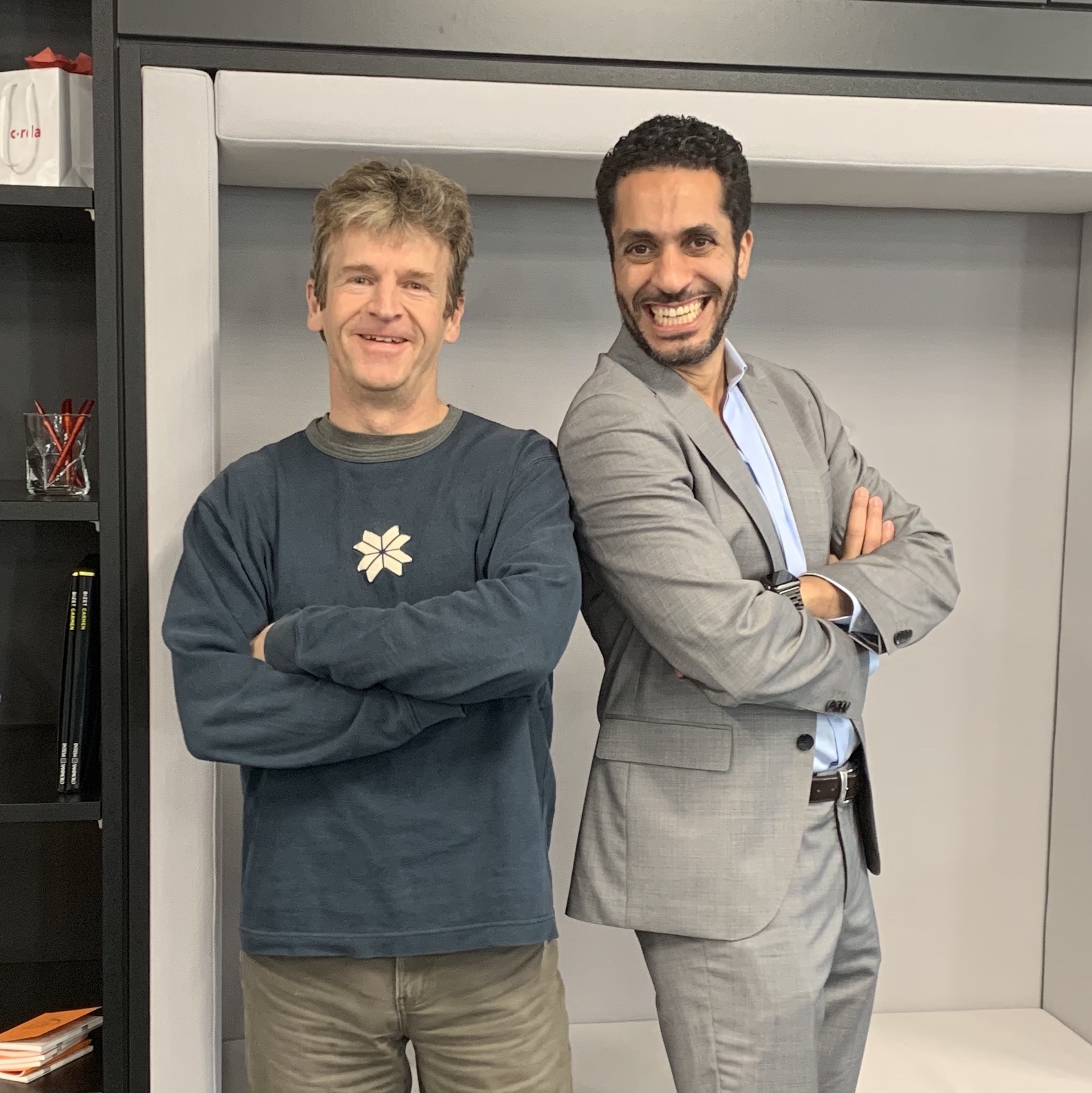
Often not considered as “sexy” in the blockchain world, but building effective governance is probably one of the most important tasks in building a resilient blockchain ecosystem. For this podcast we were very privileged to have James Carlyle, Head of Network and Operations at R3.
What is blockchain?
Blockchain is a distributed ledger system that makes a fundamental promise which is “what I see, is what you see”. The idea being that although people share a common view, they actually have their own copies of data and that matter for numerous reasons such as the one of control. . It means with a copy of their own data and the promise that what they see is what the other side sees, that they don’t need to rely on intermediaries.
What is governance?
I always say if you haven’t figured out who is in control, it’s because you haven’t been looking hard enough; there is someone there
Governance is about control first and foremost. What had initially attracted James to Ethereum was the idea of an unstoppable world computer where no one was in control. The initial bitcoin and Ethereum community were people who believed in small government or not government and perhaps they thought that these systems came without control. However James view is “I always say if you haven’t figured out who is in control, it’s because you haven’t been looking hard enough; there is someone there”.
R3’s initial governance for running a consortium
In R3’s early days it was solely focused on running a consortium and the consortium was there to explore how blockchain technology could be used in finance. Right from the start R3 set out to encourage participation and collaboration, which is absolutely fundamental for blockchain, and thus governance became important from the very start.
In its early days R3 had a steering committee that decided what it should focus on. A steering committee had representation from every one of the 42 initial bank members of R3. One of the first things the steering committee decided to do was for example to set up an architecture working group and the architecture working group had its own governance.
The architecture working group’s governance was comprised of leading and chief architects from banks thinking about the right technology choice for distributed ledger’s in banking. But governance has always mattered with these collaborative and heterogenous groups.
The Corda Network
When Corda was first designed its founder imagined a platform in which people could use Corda to manage agreements with each other for any business between any businesses and at any time… ie. the corda network. This can be thought of as an internet of Corda nodes. Corda nodes that are connected together and across which business transactions can take place.
In the initial days of Corda most groups of banks and other companies wanted to deploy their blockchain software together in the form of many consortiums who weren’t necessarily connected. Corda’s original vision of a corda network couldn’t be achieved in this manner. The reason is because each network per application has its own boundary of trust and that means that what happens in that network is trusted within the network itself, but it isn’t trusted by anyone else. Each network has a “trust route” where all of the digital signatures and so on can be traced back and it’s not possible easily at least to bring the advantages of blockchain across the boundary of one network to another.
That’s because the provenance for example which is supported by things like the digital signatures and the hash chains and everything else, that provenance doesn’t move across boundaries very easily.
If we take the analogy of two villages who want to trade with each other. In the real world what they need is a common trust boundary and that trust boundary is provided by things like language, a set of laws and currency. For example, they can trade together, two villages can trade together if they know a common legal process and a common set of laws that bind them.
The Corda Network is here to create a larger trust boundary that surrounds multiple business networks. Where it defines a number of things that they have in common, such as common rules. Example of common rules are technical aspects. They’re technical parameters of Corda and one example is the maximum message size. It is defined as a standard for the whole of the Corda network and business networks that operate within that accept that common definition, that common standard and it means that when they transact with each other one of them is not going to get surprised when it receives a message that’s much larger than it normally is used to working with. So that’s an example of a technical parameter which the Corda network defines as.
Governance models’ inspiration
James recognises that governance has been around for a long time and there exists a lot of examples on which to draw up and learn from. He draws a clear distinction for Corda that is different form the world of permissionless blockchain systems like Bitcoin and Ethereum.
Corda operates within a legal framework. Corda smart contracts would have a legal prose equivalent and there would be a jurisdiction that governed those existing agreements in the existing legal prose.
Bitcoin and Ethereum
In Corda, its members were expected to understand the identities of their trading partners. There was no sense of a sort of anonymous trading between parties as you’d expect from permissionless blockchain systems.
James and his team did look at Ethereum and Bitcoin in guiding their technical designs for Corda. They also looked at the governance of those systems. However, a lot of their governance seems to have an implicit governance model where decisions are influenced by politics and influence.
For the Corda network they wanted an explicit governance model. One where decisions were made according to a defined process. Decision-making was transparent, the principles and goals of the governance model were explicit that everyone could see and reason with.
ICANN
ICANN became a source of influence both by its simplicity and by how concise its governance model was. The initial set of Corda Network governance guidelines were initially modelled toICANN’s governance guidelines.
Additionally the Corda Network looked at the Hyperledger project, Linux Foundation, SWIFT and OPEX to name a few.
Corda Network’s governance – independent or part of R3?
As blockchain systems are deployed in the very heart of enterprise organisations. They’re often used in order to avoid things like reconciliation and in order to make the sort of cost savings real, organizations themselves need to redesign their business processes when deploying blockchain systems. That takes time. It means the deployments become long-term deployments and that means that organizations that are going to use a network have to trust the long-term nature of that network. So, stability is really important. Stability around things like access and pricing. The participants will want to know that they’re not going to be adversely affected by a pricing change in five years’ time.
James and his team felt that the only way really to provide that assurance and given that R3 itself is a commercial entity, profit-seeking entity is to set up a separate entity to govern the network, to ensure that governance is transparent, its democratic. The participants on the network have a say in how the network is run and have a say over things like pricing.
That separate legal entity would have a board of directors and participants would vote for the board of directors. So, they have a say in who represents them, and the board directors are then free to make decisions about the nature of and the running of the network
This of course imposes certain requirements on R3. It requires that R3 doesn’t seek to control the new legal entity. It requires that R3 understands and believes that the success of the network benefits R3 as well. Even if R3 doesn’t profit from the network. Participation costs to the Corda Network have been brought right down. The entity that governs the Corda Network is a not-for-profit entity so that the fees that are charged to participants exactly mirror the costs of running a few technical services.
Corda Network’s governance model
So, we want it to be transparent, we wanted to be cost effective, we want it to be stable.
Prior to launching the Corda Network, there was a lot of consultations done with business networks, application vendors and consortium that want to use Corda and the Corda Network. The feedback received from these consultations was used in fine tuning the policies and proposed rules.
The Corda Network aims to be transparent, cost effective, and stable. But yet flexible to change. Because they recognises that they won’t necessarily get it right first time and they want it to be fair and open.
The board of directors has control. It votes on things through a series of what are called – governance events, and these can either be mandatory or advisory or in extreme cases constitutional governor incidents where the nature of the foundation itself can change. The participants on corda network hold an identity. They are issued with certificate that represents their identity and that’s what they use when they transact with each other and the model was set up is as simple as possible. That is that one legal entity, where an identity corresponds to a vote of one vote. So that means that voting for directors for example, which shall happen on an annual basis, is very straightforward and the directors that receive the most votes receive take the open seats that are available to them.
Continuity is managed by a set of measures. In the steady state there is a rotating board where three seats are up for election every year with each seat lasting for three years. This means that the board doesn’t get replaced in its entirety every year and people are able to work over a three-year period to implement change and ensure continuity.
There are some protections in place around control around making sure that it’s fair. For example the board for example cannot be populated solely by people who work in banking or in any one industry or in any one continent. They didn’t want the board to be populated solely with people from Europe.
The controls state that there should not be more than three directors from any industry, not more than three directors from any continent, not more than three directors from large or very large organizations. This ensures diversity in terms of the organization size that is represented.
An additional point that is very important is that the Corda Network wants directors who are passionate about blockchain technologies and whom understand the political and governance issues. They want people to vote for individuals. Because it’s individuals that have passion and skill and so directors are invited to come forward, to be nominated or nominate themselves and describe why they think they would make a good director. Participants with a vote can then vote for individuals instead of organisations.
Transparency, clarity of rule and determinacy is incredibly important, which is why they set up a separate entity, the foundation.
The Foundation
The foundation is the independent entity. The foundation is a not-for-profit, it has a board of director structure, that it had the concept of participation and could accept a sort of voting arrangement. The UK law firm Clifford Chance, proposed a Dutch Stichting. The stitching is interesting, because it has no owners. As there are no owners and therefore there is no profit and there is no profit distribution or dividend.
The Stichting has a board that make the decisions and with the majority vote things get changes. It is based in Holland and is a Dutch legal entity.
A set of safeguards have been put in place that benefit all of the participants of the network.
One of them is that the foundation can’t be sold. Another is that the foundation cannot change its role to manage something other than corda network. These safeguards are baked into the articles of association.
Top tips in setting up a governance structure
For James, tip zero is to be completely clear about you know what the objectives are for the thing that one is applying governance to. The first tip would be not to ignore it really matters and it’s not as sexy perhaps as writing software. But it’s probably or possibly more important ultimately. It’s important for the adoption of things. So that’s tip number one is to take it seriously and to recognize that it takes time and it needs communication. It needs lots and lots of feedback and discussion to get it right. Because it can’t be too opinionated. That’s perhaps the second tip. The third tip is actually to be bold. Being opinionated helps. Because it helps to get a straw man out there that people can debate and that sometimes takes the work of this very small group of people to put a straw man together. It helps tip number four is to look around and look at what other people have done and try to figure out what can be reused and not try and ignore everything else and start from scratch. Because probably that will just take more time. Governance models have evolved with parliament and democracies and other political systems over thousands of years and human nature doesn’t change that fast.
Your Turn
Thank you James for sharing some great insights on how to build effective governance solutions within a blockchain ecosystem. If you liked this episode, please do review it on iTunes. If you have any comments or suggestions on how we could improve, please don’t hesitate to add a comment below. If you’d like to ask James a question, feel free to add a comment below and we’ll get him over to our site to answer your questions.







